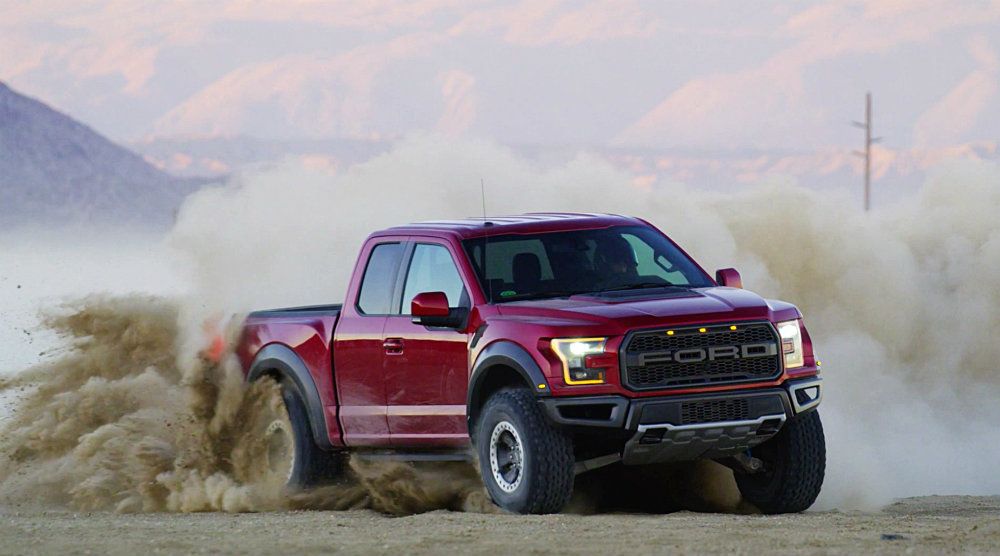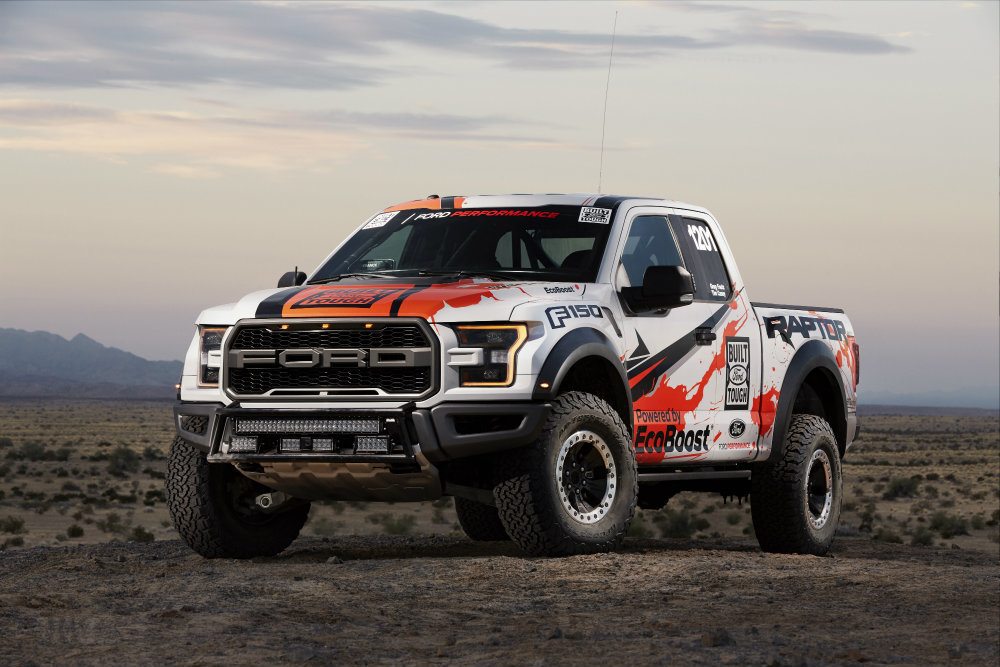You know the Ford F-150 Raptor, right? It’s sort of like what would happen if an F-150 and a Mustang had a baby, and then the baby took tons of steroids. Yeah, that truck. And look, I’m not a truck guy. To me, trucks are what you use to haul your car to the track for a race weekend, but in the case of the Raptor, I might make an exception.
The Raptor is a big brute of a guy, and shortly after it arrived, it featured a big honkin’ brute of an engine. But, fuel economy standards and all that made Ford yank that mill out, and replace it with – please sit down – a 3.5 liter turbocharged V6.
But fear not, red-blooded Americans! The new Raptor is still frighteningly fast, even (especially) off-road, but with the new engine, you spend less money on gas.
Power Transfer
Along with the new engine specs for this go-round, Ford also upgraded pretty much every detail they could get their hands on, and today we’re going to look into this electro-mechanical gizmo Ford calls the “Terrain Management System.” It’s a cutting-edge transfer case, according to Ford, that combines all-wheel drive and four-wheel drive capabilities so the Raptor can handle practically any situation. Spirited off-roading, foul weather driving, its got you covered thanks to four preset traction control modes: sport, weather, four-high desert, and four-low locked off-road driving.
This is all controlled either automatically through the Terrain Management System, or manually via the 4×4 switch. The transfer case has an electronically controlled clutch that reacts on-demand to deliver outstanding performance and confidence whether on road or off. This specifically fabricated transfer case employs an electronic shift-on-the-fly system with mechanical locks to attack “all types of terrain for serious off-road performance.”
And no, Ford is not kidding. They raced the new fore/aft box through nearly 2,500 miles of off-road competition testing.

“Raptor’s transfer case provides the best of both worlds, with the natural benefits from all-wheel drive, such as increased traction in rain and snow, as well as extreme off-road capability that comes with a mechanically locked system,” said Tony Greco, Ford F-150 Raptor Program Manager. Photo: Ford Motor Company.
Combined Performance
Characteristically, truck four-wheel drive systems come in two varieties. There are on-demand systems that use a clutch to send the torque to the front driveline, which is sort of how all-wheel drive setups work, or they use electronic shift-on-the-fly systems with mechanical locks to couple the front and rear driveshafts.
Ford pursued enhancements to the daily driving experience of the Raptor while keeping the truck’s off-road performance in play. With the clutch-based attributes of the transfer case, you can travel on-road with the 4×4 auto setting, which delivers the benefits of four-wheel drive without damaging components or binding the driveline.
The dual-mode transfer case manages the distribution of power between the front and rear wheels, obviously, but the key is the clutch-based, on-demand all-wheel drive capability for everyday driving. This includes an all-weather mode, along with a mechanically locked, durable four-wheel drive system for poise and control in severe off-road driving environments. With the non-sequential 10-speed transmission and that high-output EcoBoost engine, the new Raptor can deliver its 450 horsepower and 510 lb-ft. of torque way more efficiently, either on road, or way out in the boonies.
Validation Testing
Did I mention Ford didn’t just cook up this new idea, but they cooked it up and actually raced it? Oh, yes I did, but dig the specifics: The Terrain Management System was put through 2,500 miles of competition testing in the 2016 Best in the Desert series. The darn beast completed the 850-mile SCORE Baja 1000 with nary a hitch, and, this is the cool part: Greg Foutz Motorsports team members drove the truck back to their headquarters in Arizona another 400 miles. How’s that for reliability under stressful conditions?
The concise version here is that although the 2017 Ford F-150 Raptor, delicious as it is, changed engines, it gave up absolutely nothing in performance – shoot, it actually got better. The video below from Ford Performance explains more.
Tony Borroz has spent his entire life racing antique and sports cars. He means well, even if he has a bias towards lighter, agile cars rather than big engine muscle cars or family sedans.
Photos, Video & Source: Ford Motor Company.
from Automoblog.net http://www.automoblog.net/2017/05/06/2017-ford-f-150-raptor-ground-control/
via IFTTT
from Tumblr http://peternpalmer.tumblr.com/post/160370531166
via IFTTT

No comments:
Post a Comment